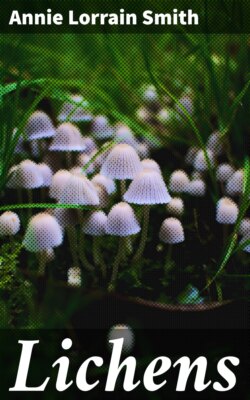Читать книгу Lichens - Annie Lorrain Smith - Страница 43
На сайте Литреса книга снята с продажи.
C. Constancy of Algal Constituents
ОглавлениеLichen hyphae of one family or genus, as a rule, combine with the same species of alga, and the continuity of genera and species is maintained. There are, however, related lichens that differ chiefly or only in the characters of the gonidia. Among such closely allied genera or sections of genera may be cited Sticta with bright-green algae and the section Stictina with blue-green; Peltidea similarly related to Peltigera and Nephroma to Nephromium. In the genus Solorina, some of the species possess bright-green, others blue-green algae, while in one, S. crocea[300], there is an upper layer of small bright-green gonidia that project in irregular pyramids into the upper cortex; while below these there stretches a more or less interrupted band of blue-green Nostoc cells. The two layers are usually separated by strands of hyphae, but occasionally they come into close contact, and the hyphal filaments pass from one zone to the other. In this genus cephalodia containing blue-green Nostoc are characteristic of all the “bright-green” species. Harmand[301] has recorded the presence of two different types of gonidia in Lecanora atra f. subgrumosa; one of them, the normal Protococcus alga of the species, the other, pale-blue-green cells of Nostoc affinity.
Forssell[302] states that in Lecanora (Psoroma) hypnorum, the normal bright-green gonidia of some of the squamules may be replaced by Nostoc. In that case they are regarded as cephalodia, though in structure they exactly resemble the squamules of Pannaria pezizoides, and Forssell considers that there is sufficient evidence of the identity of the hyphal constituent in these two lichens, the alga alone being different.
It may be that in Archilichens with a marked capacity to form a second symbiotic union with blue-green algae, a tendency to revert to a primitive condition is evident—a condition which has persisted wholly in Peltigera with its Nostoc zone, but is manifested only by cephalodia formation in the Peltidea section of the genus. In this connection, however, we must bear in mind Forssell’s view that it is the Archilichens that are the more primitive[303].
The alien blue-green algae with their gelatinous sheaths are adapted to the absorption and retention of moisture, and, in this way, they doubtless render important service to the lichens that harbour them in cephalodia.
